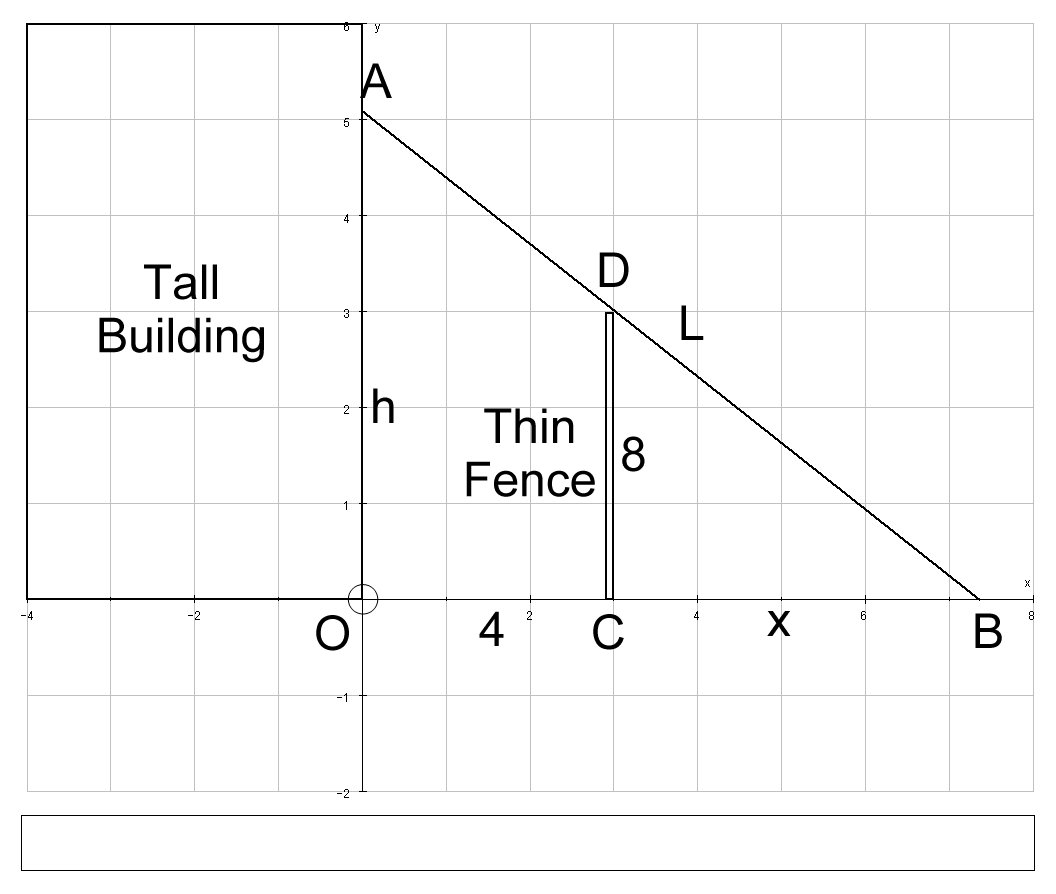A fence #8 ft# tall runs parallel to a tall building at a distance of #4 ft# from the building. What is the length of the shortest ladder that will reach from the ground over the fence to the wall of the building?
1 Answer
# 16.65 \ ft\ (2 \ dp) #
Explanation:

Let us set up the following variables:
# { (L, "Total length of ladder "AB, ft), (h, "Vertical height of ladder "OA, ft), (x, "Horizontal distance between ladder and fence "BC, ft) :} #
By Pythagoras, we have:
# \ \ AB^2 = OA^2 + OB^2 #
# :. L^2 = h^2 + (x+4)^2 # .... [A]
We also have similar triangles if we consider:
# triangle BCD# and#triangle OAB#
Which gives us the proportional relationship:
# OA:CD = OB:BC #
# :. h/8 = (4+x)/x => h = (8(4+x))/x #
Substituting this last expression for
# L^2 = ((8(x+4))/x)^2 + (x+4)^2 #
# \ \ \ \ = ((8x+32)/x)^2 + (x+4)^2 #
# \ \ \ \ = (8+32/x)^2 + (x+4)^2 # ... [B]
Our aim is to now minimimze
# 2L (dL)/dx = 2(8+32/x)(-32/x^2) + 2(x+4) #
# \ \ \ \ \ \ \ \ \ \ = 16((x+4)/x)(-32/x^2) + 2(x+4) #
# \ \ \ \ \ \ \ \ \ \ = 2(x+4){1-256/x^3} #
At a critical point the derivative is zero and so we have the equation:
# 2(x+4){1-256/x^3} = 0 #
Leading to the solutions:
# x+4 = 0 => x= -4 #
# 1-256/x^3 = 0 => x = root(3)(256) #
We require that
(We will omit the proof that this critical value corresponds to a minimum, we can verify this graphically, or use the second derivative test)
And so at this critical value, we can calculate the minimum ladder length using [B]:
# L^2 = (8+32/root(3)(256))^2 + (root(3)(256)+4)^2 #
# \ \ \ \ = 277.1476713 ... #
# :. L = 16.6477527 .... ft #

